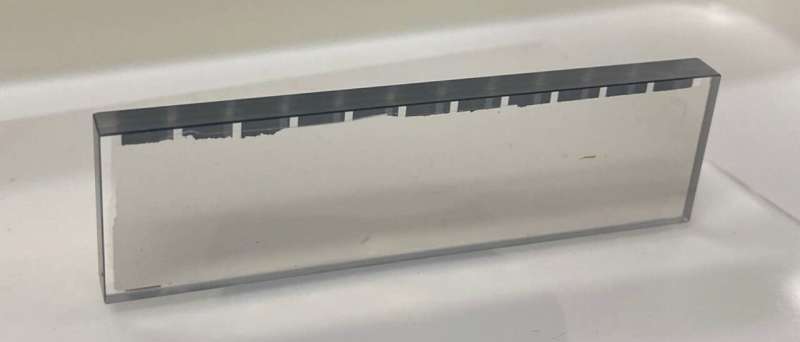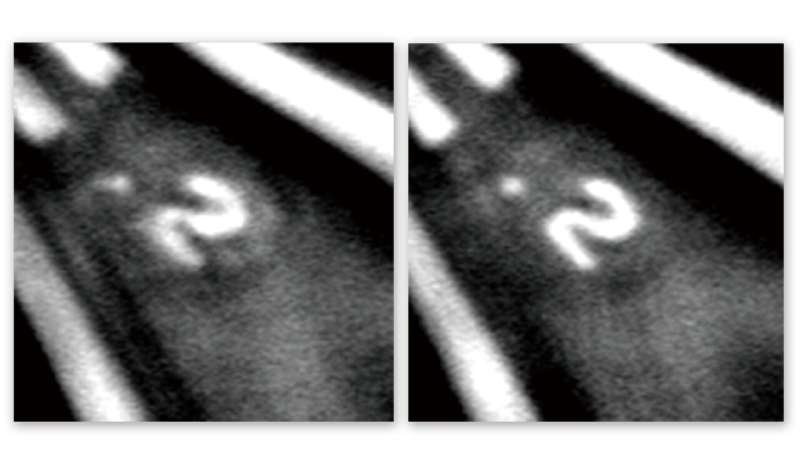This article has been reviewed according to Science X's editorial process and policies. Editors have highlighted the following attributes while ensuring the content's credibility:
fact-checked
peer-reviewed publication
trusted source
proofread
New mirror that can be flexibly shaped improves X-ray microscopes

A team of researchers in Japan has engineered a mirror for X-rays that can be flexibly shaped, resulting in remarkable precision at the atomic level and increased stability.
The new technology developed by Satoshi Matsuyama and Takato Inoue at the Graduate School of Engineering of Nagoya University, in collaboration with RIKEN and JTEC Corporation, improves the performance of X-ray microscopes and other technologies that use X-ray mirrors. The results were published in the journal Optica.
An X-ray microscope is an advanced imaging tool that bridges the gap between electron and light microscopy. It uses X-rays, which can provide better resolution than light and penetrate samples too thick for electrons to penetrate. This allows for imaging of structures that are difficult to see with other microscopy techniques.
X-ray microscopes have high resolution, which makes them especially valuable in fields such as materials science and biology because they can observe the composition, chemical state, and structure inside a sample.
Mirrors play a vital role in X-ray microscopes. They reflect X-ray beams, allowing for high-resolution imaging of complex structures. High-quality images and accurate measurements are a necessity, particularly in state-of-the-art scientific fields such as catalyst and battery inspections.
However, the small wavelength of X-rays makes them vulnerable to distortion from minor manufacturing flaws and environmental influences. This creates wavefront aberrations that can limit image resolution. Matsuyama and his collaborators solved this problem by creating a mirror that can deform, adjusting its shape according to the detected X-ray wavefront.

To optimize their mirror, the researchers looked at piezoelectric materials. These materials are useful because they can deform or change shape when an electric field is applied. This allows the material to reshape itself to respond to even minor aberrations in the detected wave.
After considering various compounds, the researchers chose a single crystal of lithium niobate as their shape-changeable mirror. Single-crystal lithium niobate is useful in X-ray technology because it can be expanded and contracted by an electric field and polished to make a highly reflective surface. This allows it to serve as both the actuator and the reflective surface, simplifying the device.
"Conventional X-ray deformable mirrors are made by bonding a glass substrate and a PZT plate. However, joining dissimilar materials is not ideal and results in instability," Matsuyama said.
"To overcome this problem, we employed a single crystal piezo material, offering exceptional stability because it is made of a uniform material without bonding. Due to this simple structure, the mirror can be freely deformed with atomic precision. Moreover, this precision was maintained for seven hours, confirming its extremely high stability."
When they tested their new device, Matsuyama's team found that their X-ray microscope exceeded expectations. Its high resolution makes it especially suitable for observing microscopic objects, such as semiconductor device components.
Compared to the spatial resolution of conventional X-ray microscopy (typically 100 nm), their technique has the potential to develop a microscope that provides a resolution about 10 times better (10 nm) because the aberration correction brings it closer to the ideal resolution.
"This achievement will promote the development of high-resolution X-ray microscopes, which had been limited by the precision of the fabrication process," said Matsuyama.
"These mirrors can be applied to other X-ray apparatus, such as lithography devices, telescopes, CT in medical diagnostics, and X-ray nanobeam formation."
More information: Takato Inoue et al, Monolithic deformable mirror based on lithium niobate single crystal for high-resolution X-ray adaptive microscopy, Optica (2024). DOI: 10.1364/OPTICA.516909
Journal information: Optica
Provided by Nagoya University




















